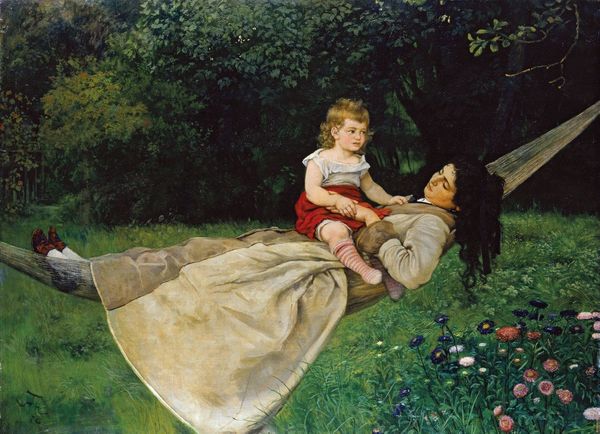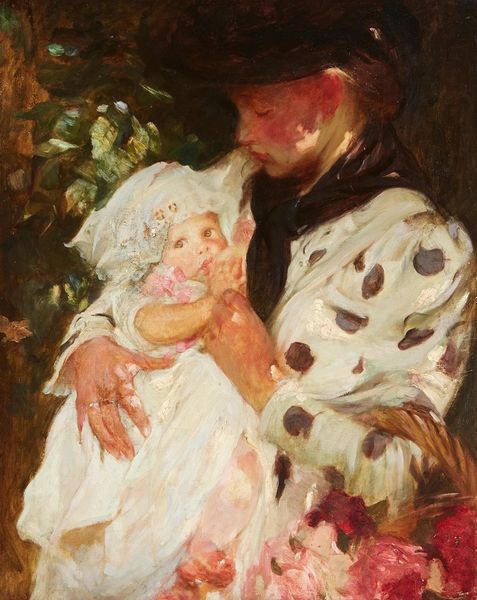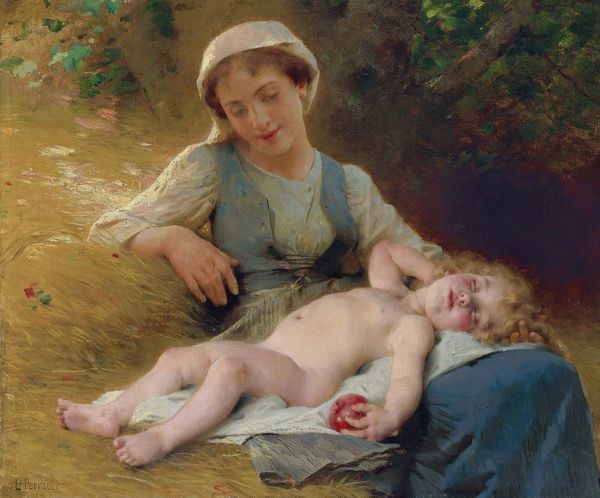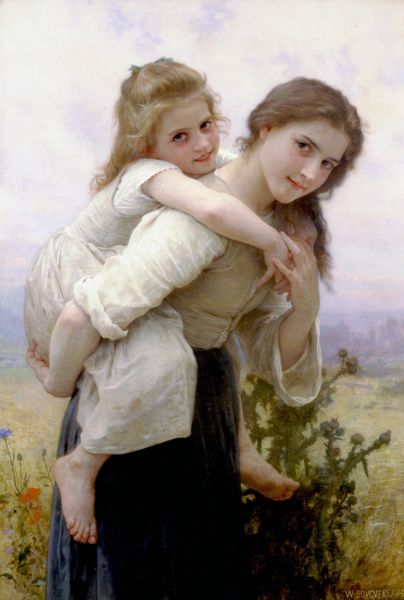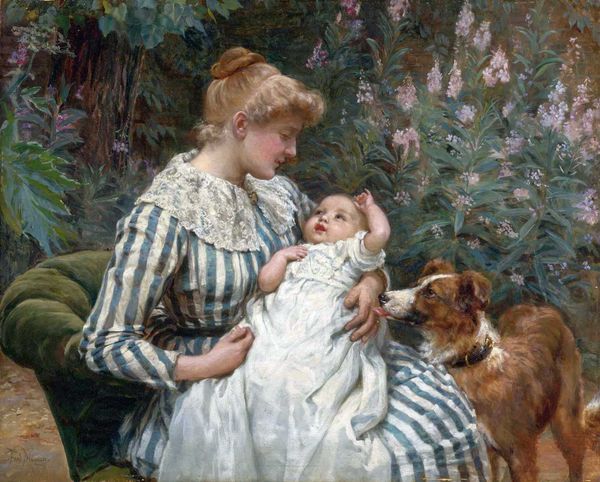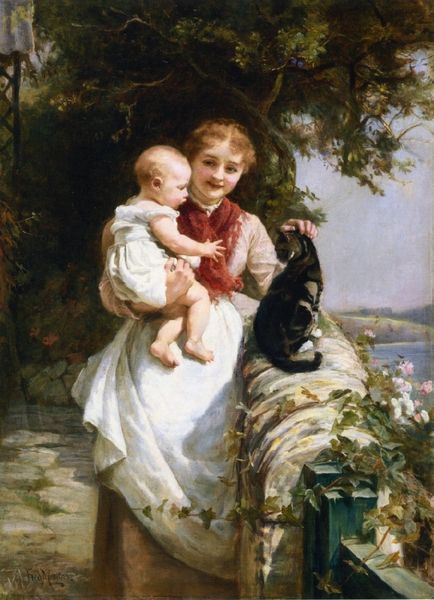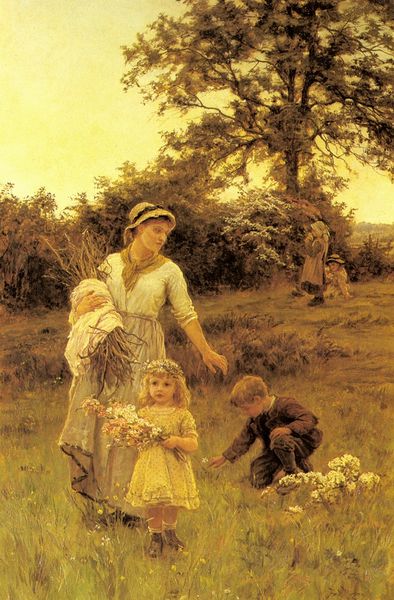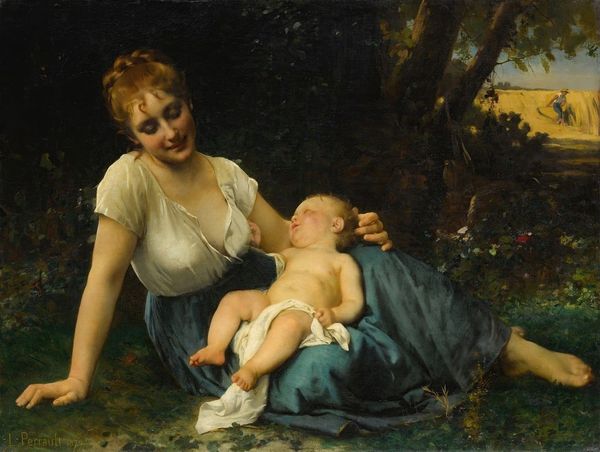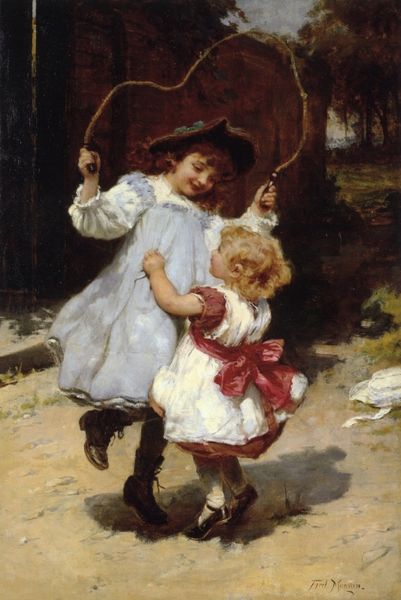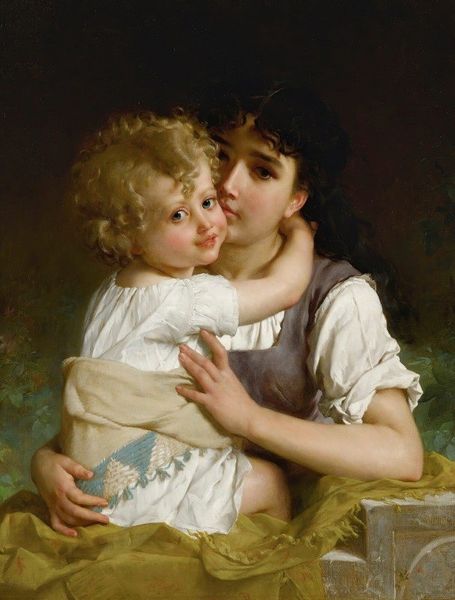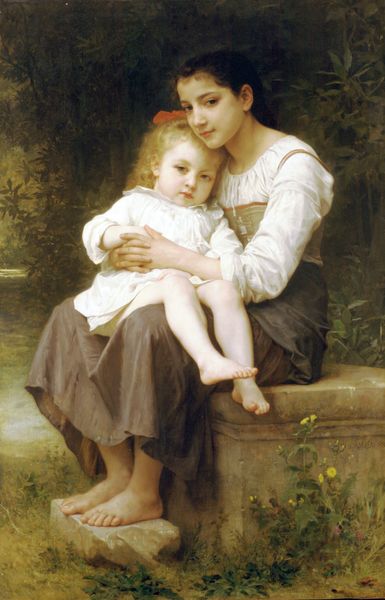
Copyright: Public Domain: Artvee
Curator: James Tissot painted this evocative scene, titled "The Widower," in 1876, utilizing oil on canvas to create a moving portrait. Editor: The initial impression is of muted sorrow, isn't it? There's a heaviness suggested by the dense foliage and the man’s somber clothing. Curator: Indeed. Note how Tissot uses a somewhat flattened perspective and strong verticals – the rhubarb stalk, the reeds, the figure itself. These all work to create a sense of compression, almost trapping the subjects within the pictorial space. Editor: Absolutely. Considering the title, the scene feels profoundly gendered. A widower and his daughter—roles burdened by Victorian expectations. He’s dressed entirely in black; she's mostly in white, offering a spark of life, hope even, amidst mourning. But she is also dependent, helpless. Her reaching arm also feels poignant. Curator: I see your point. Formally, there is a sharp contrast between the precise details of the figures and the more loosely rendered background, but also between that dominant verticality and a certain flatness of picture plane. These suggest a rupture in the scene's natural order. It emphasizes, rather elegantly, a disjunction, or even the broken nature of what was once whole. Editor: And isn't the placement telling? He's framed, almost consumed, by nature – the garden, traditionally a feminine space. His confinement could symbolize the restricted social roles imposed on widowers, the sense of being uprooted and adrift, maybe even from traditional masculinity. His sadness traps her within this situation, doesn’t it? Curator: Precisely. There’s a deliberate tension between the formal elements – a static composition charged with underlying unease and emotion. Editor: Thinking about its narrative then, and what Tissot implies, I wonder what he meant by showcasing this interaction between childhood and masculine mourning amidst nature in full bloom. Curator: Food for thought. It all creates an uneasy sense of the lingering effects of grief. Editor: A perspective shaped through the eyes of a decidedly modern artist engaging with poignant subject matter.
Comments
No comments
Be the first to comment and join the conversation on the ultimate creative platform.


